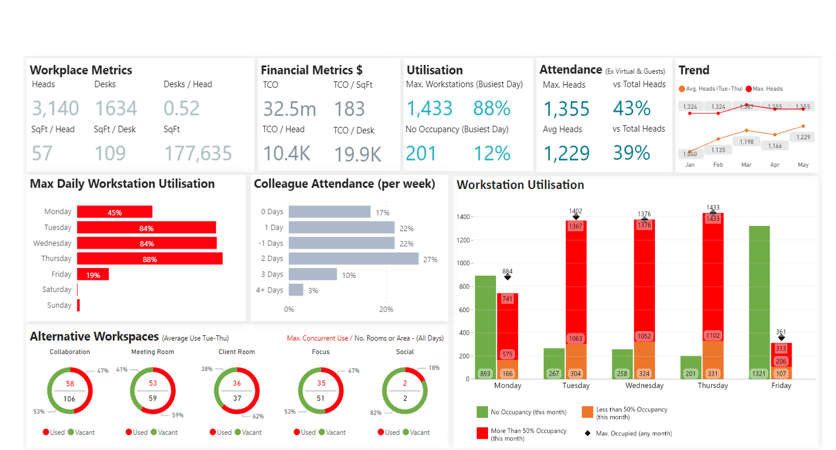Using Long Term Deployment Sensors for ICS and Net Zero Targets

In our previous blog, Rethinking Space Management: Smarter Estate Decisions, we looked at how both short and long-term space utilisation surveys can inform estates planning across the NHS. As organisations drive towards Integrated Care Systems (ICSs) and face the pressures of Net Zero targets, many are turning their focus to the longer term deployment option.
What Is Long-Term Sensor Deployment?
Long-term sensor deployment involves installing permanent sensors across key locations in a building or estate from clinical spaces to offices and meeting rooms. These sensors capture live occupancy and utilisation data over months, rather than days or weeks. Key benefits of this type of study include:
- Enables strategic, real-time space management
This continuous flow of data allows estates teams to make decisions that optimise space utilisation and respond quickly to changing needs.
- Supports long-term digital estates planning at system level
By pulling together data across multiple sites, organisations can develop informed plans that align with ICS objectives.
- Provides trend analysis for planning flexibility, peaks, and patterns
Understanding usage trends over time helps anticipate demand so organisation’s can design and invest in spaces for these requirements.
- Informs agile/hybrid models and targeted estates investment
As working patterns evolve, long-term insights enable organisations to tailor their estate to support flexible working patterns and prioritise investments where they will have the greatest impact.
How does it support ICS objectives and Net Zero?
By understanding how space is truly used across an estate, ICS leaders can identify opportunities to optimise buildings, improve employee satisfaction, and enhance patient experience.
From a sustainability perspective, continuous sensor data is invaluable in reducing carbon footprints. By revealing patterns of occupancy and identifying underused spaces, organisations can streamline their estate footprint and cut unnecessary energy consumption. Sensors also enable smarter control of utilities such as heating and lighting, ensuring they are only used when spaces are occupied. This all plays a vital role in making progress towards the NHS’s target to be Net Zero by 2045.
To conclude, long-term sensor deployment offers a powerful way for NHS organisations to better understand how their spaces are used. This helps Integrated Care Systems make smarter decisions about organising buildings and services to improve staff and patient experiences while reducing energy waste by using heating, lighting, and other systems only when needed. By using sensors in this way, organisations can be more efficient, and take steps towards meeting their Net Zero goals.
Discover more about our sensor solutions
We’ve partnered with Abintra to help organisations unlock hidden capacity, improve space planning, and accelerate towards their Net Zero goals. Explore the features, benefits, and real-world impact of our long-term sensor deployment here.




